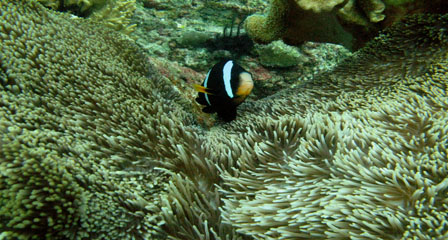BANDA ACEH, Indonesia (AP) – A powerful earthquake hit waters off western Indonesia early Wednesday, prompting officials to briefly issue a tsunami warning. Panicked residents poured into the streets, but there were no immediate reports of injuries or serious damage.
The U.S. Geological Survey said the 7.3-magnitude quake struck 260 miles (420 kilometers) off the coast of Aceh province just after midnight. It was centered 18 miles (30 kilometers) beneath the ocean floor.
People in the provincial capital, Banda Aceh— still deeply traumatized by the 2004 monster quake and tsunami — were rattled from their sleep. They fled their homes and waited outside as sirens blared from local mosques, some hopping in cars and motorcycles and heading for high ground.
"I'm afraid," said Fera, a resident, who skidded off on her motorbike with her two children and her mom.
In the town of Seumele, patients were evacuated from a a hospital.
Officials contacted by The Associated Press in several coastal cities, however, had not received any reports about serious injures or damage.
Nearly two hours after the quake struck, the local geological agency lifted it's tsunami warning.
Indonesia is prone to seismic upheaval due to its location on the Pacific "Ring of Fire," an arc of volcanos and fault lines encircling the Pacific Basin.
A giant quake off the country on Dec. 26, 2004, triggered a tsunami in the Indian Ocean that killed 230,000 people, half of them in Aceh.


















